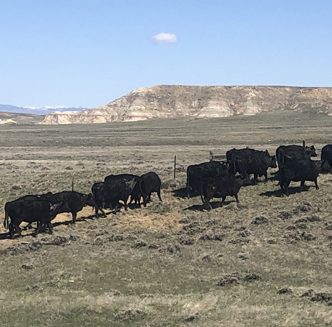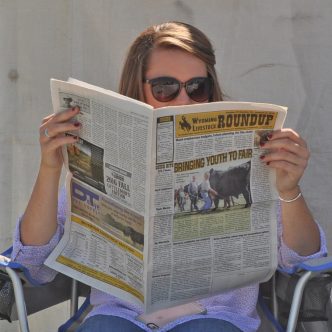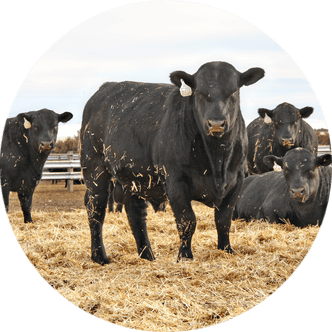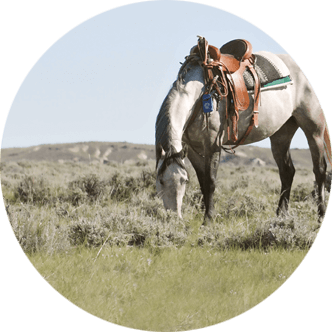RMAL program: UW wraps up Ranching in the West Series
Wyoming’s agriculture industry encompasses diverse opportunities merging traditional farming, ranching and tourism.
To cover the different aspects of this diverse industry, the University of Wyoming (UW) Ranch Management and Agricultural Leadership (RMAL) Program hosted its annual four-part Ranching in the West Seminar Series over the course of the past few months, wrapping up with the third and fourth installments in April.
On April 3, the third seminar took place at Northwest College in Powell, where UW Johnson County Agriculture and Natural Resources Extension Educator Micah Most introduced a series of speakers who discussed practical strategies for integrating tourism experiences into working agricultural operations.
UW Extension educators presented to agricultural professionals, ranch owners and entrepreneurs on how to create sustainable revenue streams while sharing authentic ranch life experiences and diversifying family ranch operations.
“Agriculture is constantly evolving. New things come up, and old things come back around,” said Makayla Getz, a UW Park County Extension educator who helped organize the event. “It is not the exact same field it was when our grandparents were in tractors and combines and when they were out feeding cattle.”
Marketing
Getz and UW Jay Kemmerer Wyoming Outdoor Recreation, Tourism and Hospitality (WORTH) Institute Extension Educator Hailey Sorg addressed agricultural marketing and how traditional agricultural producers can benefit from agritourism.
Tourism is the second largest industry in Wyoming, generating over $4.8 billion in 2023. In addition, tourism is the largest private employment sector in Wyoming, employing over 33,000 individuals. WORTH helps support, expand and diversify Wyoming’s economy through the outdoor recreation, tourism and hospitality industries.
To improve ag marketing, producers can focus on understanding their target audience, utilizing digital marketing and highlighting the value of their products or services.
“This includes leveraging social media, e-mail marketing and content marketing, as well as emphasizing sustainability and building strong customer relationships,” Getz stated. “Another great way to market products or goods is to attend in-person events, such as farmers’ markets.”
Getz went on to explain how content marketing is utilized in the ag industry, as it is used to attract and engage with target audiences and build trust, while educating consumers and building brand awareness.
“Branding benefits include getting the business name and product out to the public, driving sales and increasing product value by generating local connections,” she concluded.
Sorg joined Getz to discuss agritourism and provide a definition. Agritourism, she said, is a form of commercial enterprise linking agricultural products and/or processes with tourism to attract visitors on to a farm, ranch or other agricultural businesses for the purpose of entertainment and/or education while generating income for the farm, ranch or business owner.
“The U.S. Department of Agriculture categorizes agritourism into five main types – education, hospitality, outdoor recreation, entertainment and on-farm direct sales,” she explained. “Here in Wyoming, we are lucky to partner with a lot of local schools to bring children out to participate in agritourism activities, providing them with learning experiences.”
Final seminar
On April 17, students and area participants gathered at the Laramie Research and Extension Center (LREC) in Laramie for the final event in this year’s UW Ranching in the West Seminar Series, titled “Ranch Stewardship at High Elevation.”
Hosting the event was RMAL Associate Director Dr. Randall Violett, who works to bridge multidisciplinary classroom instruction with hands-on learning, connecting students with producers and industry leaders to enhance real-world agricultural education.
Joining Violett was the seminar’s emcee UW LREC Director Dr. Derek Scasta who oversees all LREC farm and ranch operations, as well as research and Extension initiatives including cooperation with more than 20 faculty colleagues annually.
Among the presenters for the morning session were UW Extension Beef Specialist Dr. Shelby Rosasco who discussed the 2025 High Altitude Bull Test and Sale which took place at the Cliff and Martha Hansen Teaching Arena in Laramie.
Nicki Nimlos, a third-year UW PhD researcher who specializes in opportunities for ranchers in the voluntary carbon market, gave a brief review of services producers from across the western U.S. have available and how she can help ranchers navigate carbon contracts to determine if participating in the carbon market aligns with their operations.
UW Research Associate Timm Gergeni, the UW infrastructure development and associate grazing manager for the McGuire Ranch, provided updates on the university’s Metrics, Management and Monitoring (3M) grant project.
According to Gergeni, the 3M project is a multi-region research initiative with the primary goal of understanding how farmers’ and ranchers’ management practices impact soil health, carbon sequestration and overall ecosystem health on pasture and rangelands between three different ecoregions located in Wyoming, western Colorado, midwestern Michigan and southern Oklahoma and Texas.
Song bird research
Amanda Norton, a third-year UW PhD student in the Department of Ecosystem Science and Management who focuses her research on the intersection of wildlife conservation and rangeland management, discussed research conducted at the McGuire Ranch, which was aimed to understand how the timing, duration and intensity of cattle grazing affect songbird nesting survival during the breeding season.
Additionally, she explained how grazing influences changes in songbird density and diversity.
During the breeding season, sagebrush-obligate songbirds may choose nest locations on functioning ranches dominated by shrub species for nesting coverage and foraging opportunities.
She reported habitat has declined since 1970, with about 700 million birds lost – approximately 53 percent of the total population – and in arid-land birds, there has been a 36 million population loss, which is about 23 percent of the total population.
Historic high-intensity, continuous cattle grazing on sagebrush steppe ecosystems has caused declines in the songbird population by altering vegetation structure and creating less favorable conditions for nest success.
However, according to her research results, of the 689 observed occurrences for all species, three focal species dominate the songbird community on the McGuire Ranch, including the Brewers sparrow, horned lark and vesper sparrow.
Research suggests intermediate grazing intensities may be beneficial for maintaining bird abundance and richness, while high or low grazing intensity can negatively impact bird populations. But, utilizing different grazing systems such as rest-rotation versus season-long grazing have varying effects on songbird populations.
Concluding the event
Monte Reed, a third-generation rancher who helps manage his family ranch located on the south end of Thunder Basin National Grasslands, explained how his family’s operation has been raising sheep and cattle with an emphasis on improving rangeland grasses to benefit both livestock and wildlife using virtual fencing.
According to Reed, utilizing virtual fencing can keep cattle out of areas, limiting heavy foot traffic which leads to erosion or using fencing to keep or guide cattle to areas where the forage is potentially better or needs to be grazed down.
The Reeds are a founding member of the Thunder Basin Grasslands Prairie Ecosystem Association and are also involved in the Audubon Conservation Ranching program.
While improvements on the ranch have been done for the livestock, they also benefit wildlife, balancing the need for conservation while keeping the land profitable.
Melissa Anderson is the editor of the Wyoming Livestock Roundup. Send comments on this article to roundup@wylr.net.





